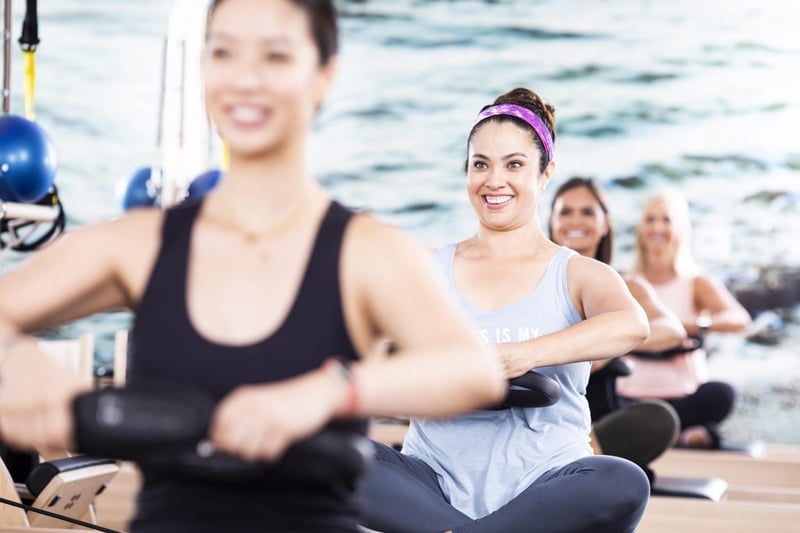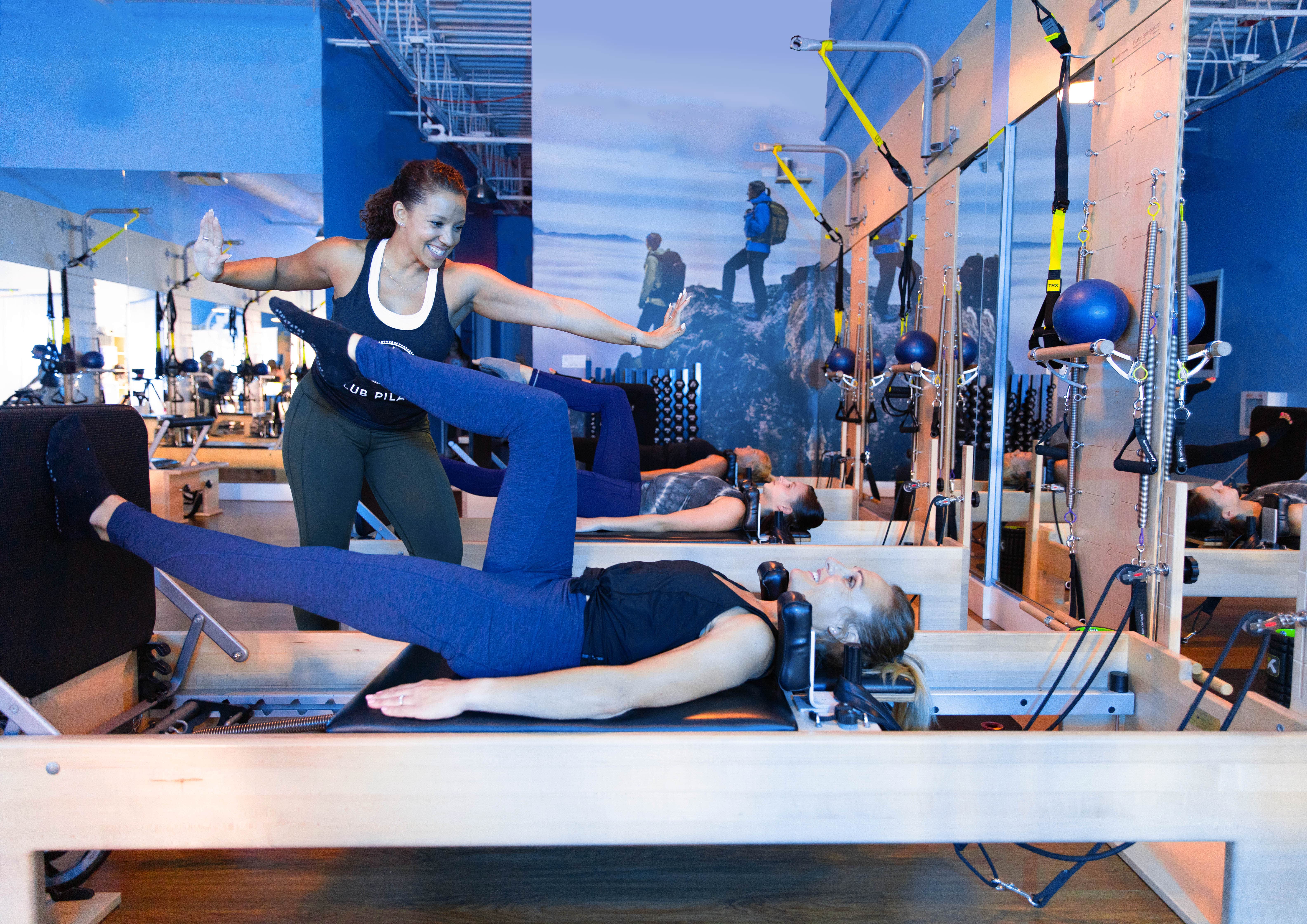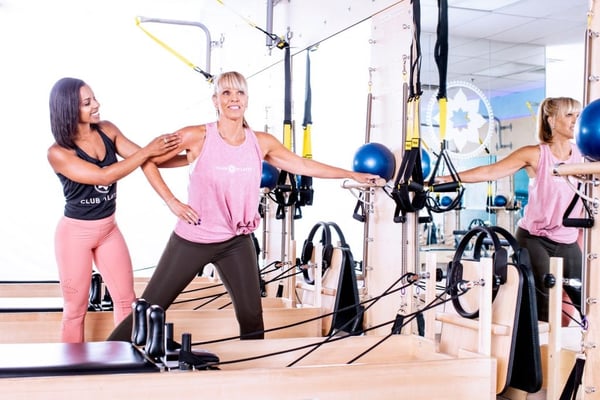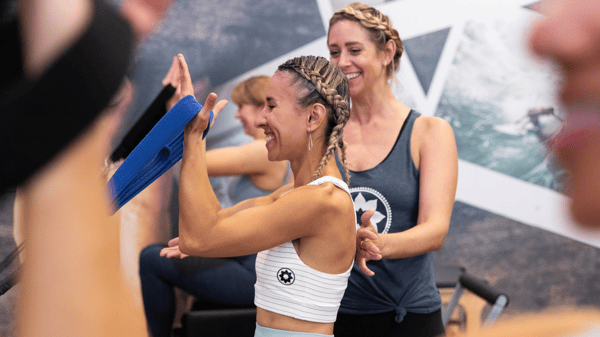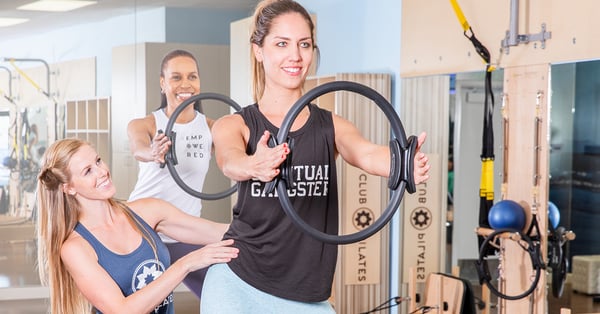3 Ways Pilates Strengthens Your Core
Posted 10 May 2022
Your core muscles (the three major muscle groups in your abdominal area) are far more important than you may realise, and they influence everything from posture and balance, to spinal alignment and joint pain. Pilates is a great way to strengthen your core – this exercise was developed with a specific focus on this muscle group – and the founder of Pilates, Joseph Pilates, believed that strong abdominal muscles were key to a healthy body and created his exercises with this in mind.
Today, Pilates takes this practice one step further to provide a thorough core workout that not only offers fantastic physical and mental health benefits, but that actually impacts your daily life. If you’re looking for tried-and-tested ways of improving your core strength, Pilates is the place to start.
Find out more below!
How Does Pilates Strengthen Your Core?
Pilates focuses on quality over quantity, which means that each movement is performed with control and purpose. This focus on form and technique helps to target the deep abdominal muscles – something that other exercises, such as sit-ups and crunches, fail to do.
Additionally, the slow and steady movements of Pilates help to improve your balance and coordination. This is because when you’re working on your balance, your core muscles are automatically engaged. In doing so, you not only improve your overall strength but also work on those smaller, stabilising muscles that are often overlooked.
Finally, Pilates breathwork helps to engage the diaphragm – a large muscle at the base of the lungs that’s essential for both respiration and core stability. By learning how to control your breath, you can also learn how to engage your deep abdominal muscles, furthering the effects of each Pilates exercise.
Controlled Movements Promote Muscle Strength
As we’ve mentioned, the focus on form and control in Pilates is what sets this exercise apart from others and makes it so effective in terms of core strength. Each movement is performed with a purpose, which helps to engage the deep abdominal muscles that other exercises often miss.
Additionally, the slow and steady pace of each Pilates movement means that you’re working your muscles for longer. This may not seem like a big deal, but it actually makes a huge difference when it comes to muscle development. When you work a muscle slowly and steadily, you’re able to place more tension on that muscle, meaning that you can develop strength more effectively.
Pilates also uses both concentric (when the muscle contracts) and eccentric (when the muscle lengthens) movements. This variety helps to promote muscle growth and prevent imbalances, meaning that you’re able to develop a strong and balanced core.


Low-Impact Exercise with a Focus on the Core
One of the best things about Pilates is that it’s a low-impact exercise, which means that it’s gentle on your joints and perfect for those who are looking for a workout that won’t aggravate existing injuries.
Additionally, the use of props such as resistance bands and Pilates balls can help to take some of the pressure off your joints while still providing a challenging workout.
As your core muscles become stronger, you can gradually increase the intensity of your workouts by adding more reps or using heavier equipment.
Improve Your Posture and Your Core!
One of the most common complaints that we hear from our clients is that they have poor posture. This is often due to weak core muscles, as these are the muscles that help to support your spine.
By strengthening your core muscles with Pilates, you can improve your posture and find relief from back pain. This is because strong core muscles provide the support that your spine needs, helping you to stand up straight and avoid slouching.
Additionally, Pilates helps to improve your alignment by lengthening and toning your muscles. This can not only make you look taller and more confident, but it can also help to prevent injuries by ensuring that your body is in the correct position.
3 Ways Pilates Will Strengthen Your Core
1. The Hundred
Lie on your back with your legs in the air and arms by your sides, then lift your head and shoulders off the ground as you pump your arms up and down 100 times. The key here is to keep everything slow and controlled – resist the urge to let your momentum carry you through the movement!
2. Single-Leg Kick
To practice this move, lie on your back with both legs in the air and your arms by your sides. From here, lower one leg towards the floor as you kick it back up towards the ceiling – be sure to keep your abs engaged throughout. Complete 10 reps on each side.
3. Double Leg Stretch
Start lying on your back with both legs in the air and arms by your sides. As you inhale, reach your arms up towards the ceiling and then, as you exhale, pull your knees in towards your chest. From here, reach your arms back out as you extend your legs back up to the ceiling – be sure to keep breathing throughout the movement!
Get a Core Workout at Club Pilates
Pilates is a fantastic way to improve core strength, and these three exercises are just a taste of what this exercise has to offer. By targeting the deep abdominal muscles and improving balance and coordination, Pilates can bring about real changes in your quality of life.
Find a Club Pilates studio near you to book your class, or sign up for a 30-minute free trial class. We can’t wait to see you in studio!
